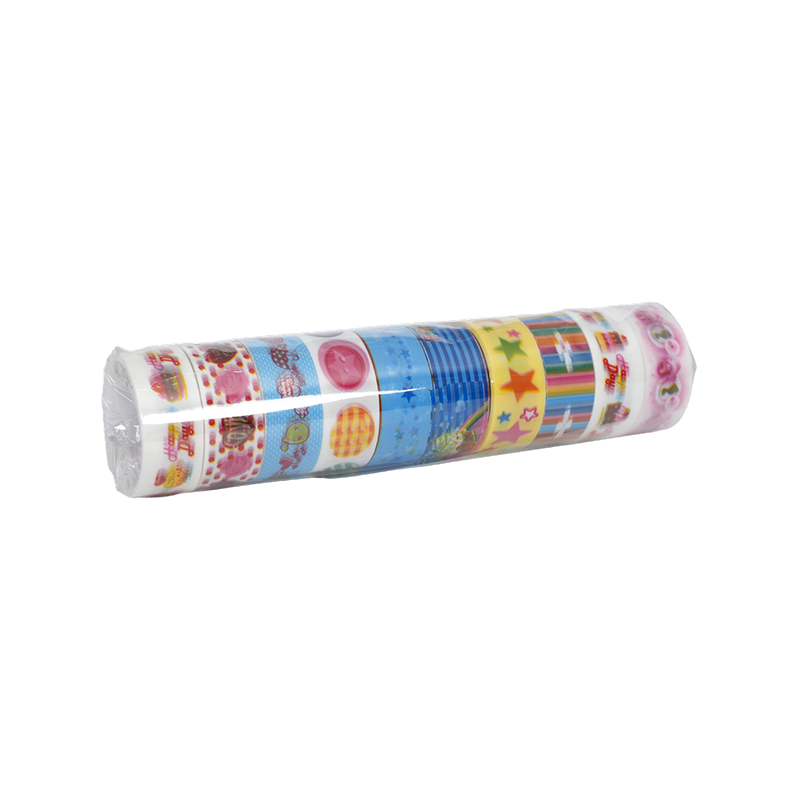Stationery Tape Innovations Shaping Office and Creative Spaces in 2025
Stationery Tape remains an indispensable tool across homes, schools, and offices in 2025. Its role extends beyond simple adhesive functions, evolving into a combination of functionality, design, and sustainability.
Stationery Tape Market Growth and Demand Trends
The global stationery tape market continues to expand due to rising office setups, DIY projects, and e-commerce packaging demands. Market analysts estimate a value of approximately USD 3.5 billion in 2025, projected to reach USD 5 billion by 2032, reflecting a steady growth trend. Urbanization, compact living spaces, and the popularity of home crafting further drive consumption.
Businesses increasingly rely on stationery tape for packaging, labeling, and office organization. Schools and educational institutions also contribute to demand, as creative projects and classroom organization tools often include decorative and functional tape. These factors make stationery tape an essential commodity in both commercial and personal settings.
Stationery Tape Material and Adhesive Innovations
Material development is central to modern stationery tape evolution. Manufacturers experiment with eco-friendly films, biodegradable plastics, and high-performance adhesives. The advent of stronger, longer-lasting adhesives allows stationery tape to perform reliably on various surfaces.
Innovations in film backing include improved flexibility, transparency, and tear resistance. Some tapes incorporate reinforced fibers for added durability, while others offer matte or glossy finishes to match aesthetic preferences. Hot-melt adhesives and solvent-free options are increasingly used, reducing environmental impact without compromising functionality.

Stationery Tape Sustainability Initiatives
Sustainability has become a key focus in the stationery tape industry. Environmentally conscious designs include tapes made from recycled materials, plant-based plastics, and compostable fibers. Manufacturers also design tapes that are easier to recycle, ensuring minimal waste.
Eco-friendly stationery tape market segments are growing, reflecting consumer preference for products that reduce environmental footprints. Green packaging initiatives, coupled with increasing regulatory attention on plastic use, encourage companies to adopt sustainable production methods, improving brand perception while maintaining product quality.
Stationery Tape Design and Creativity Trends
Design innovation is a driving factor for stationery tape popularity. In 2025, decorative masking tapes, printed tapes, and pastel or patterned options are highly sought after for creative projects, gift wrapping, scrapbooking, and journaling. Seasonal collections introduce limited designs that appeal to students, hobbyists, and professional designers alike.
Stationery tape is no longer purely functional; it has become an expression of personal style. Custom printing, thematic patterns, and color-coordinated collections are transforming how consumers engage with this product, combining practicality with creativity.
Stationery Tape Applications Across Industries
The versatility of stationery tape supports broad usage. In offices, it is used for sealing envelopes, bundling documents, and labeling items efficiently. In schools, it aids in art projects, classroom displays, and educational activities. Creative professionals rely on decorative tape for design boards, prototyping, and packaging presentation.
Home crafters utilize stationery tape in DIY projects, furniture decoration, and personal organization. The combination of strong adhesion, aesthetic appeal, and material adaptability ensures stationery tape continues to meet diverse consumer requirements.
Conclusion
Stationery Tape in 2025 represents a convergence of functionality, sustainability, and creativity. The versatile, environmentally conscious, and aesthetically appealing characteristics ensure stationery tape remains an essential tool for consumers seeking both practicality and inspiration in everyday tasks.


 ENG
ENG
 Español
Español عربى
عربى











